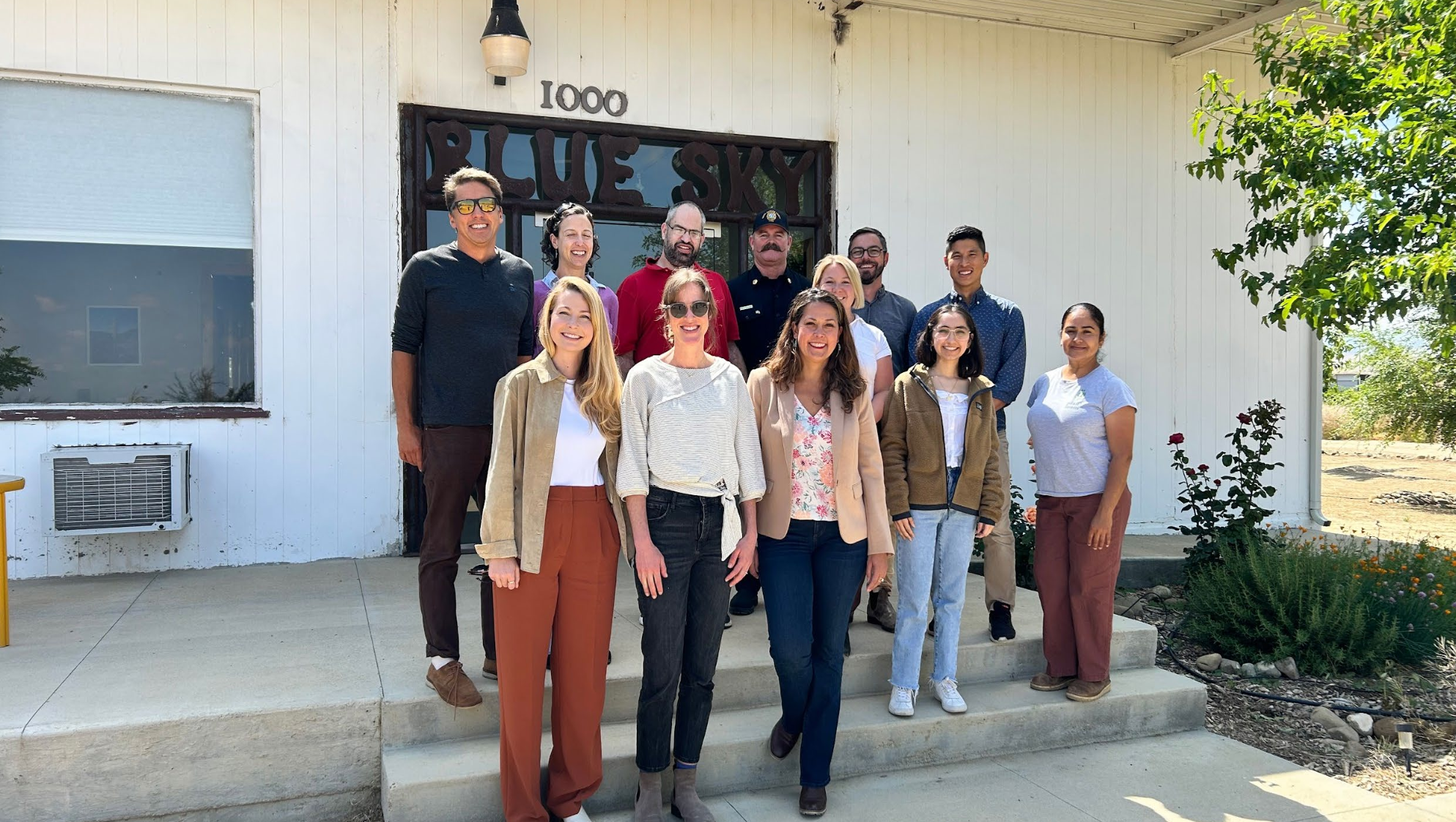
Blog
A space for learning.

Building Resilience for the Future with Girls Inc. of Carpinteria
In Carpinteria, where recent emergencies have closed Highway 101 and limited access to the coastal community, Girls Inc. has become a Community Resilience Hub. In an emergency, the campus can host 500 people and supply three days of solar power.

Resilience Takes Root in Cuyama
In the remote Cuyama Valley, where emergency services are limited and disasters are increasingly common, Blue Sky Center (BSC) has emerged as a vital Community Resilience Hub. During the recent Madre and Gifford wildfires, BSC hosted firefighters and offered a landing zone for helicopters — helping to drastically speed up response times.

Beat the Heat: Lessons Learned from the Fastest Warming County in the Nation And How You Can Ensure Neighbors Are Safe When Temperatures Rise
Did you know Ventura County is warming faster than almost anywhere else in the US?

A New Initiative Will Create Neighborhood Resilience Hubs to Serve Vulnerable Populations
Imagine your community is impacted by the next wildfire that starts in our region. Maybe your home is in close proximity to the flames, or the smoke and ash from the fire drifts to your doorstep. How will you respond? Will you have the supplies you need? Will you know when or where to evacuate to? If you lose power, how will you prepare food, stay cool, or run air purifiers? What if you have a neighbor who needs help? By sharing information and resources, residents can be empowered to support each other and build community resilience in the face of wildfires, earthquakes, extreme heat, and other natural disasters.


As the United Nations Sounds a Warning Bell: CEC Releases First-Ever Action Plan for Climate Resilience on California’s Central Coast
This unprecedented plan addresses the most pressing climate threats to our region – offering solutions that are needed now and can be immediately activated to build resilience across our community.

ÉXITO: Ayúdanos a crear una ruta de recorrido más segura, equitativamente accesible, e ininterrumpida para ciclistas y peatones
El alcalde de Santa Bárbara y los miembros del Consejo Municipal votaron unánimemente para defender la petición y apoyar el Proyecto Paseos de la Comunidad del Lado Oeste. Hubo algunas condiciones para su aprobación, principalmente para garantizar que los miembros de la Comisión de Monumentos Históricos puedan apoyar el diseño del paisaje para el proyecto y para mejorar la forma en que el personal de la Ciudad lleva estos proyectos a sus reuniones de revisión de diseño (incluida la Comisión de Monumentos Históricos).
Aprobar el Proyecto Paseos de la Comunidad del Lado Oeste es un paso crítico para la acción climática, andar en bicicleta y caminar de manera más segura y equidad en el transporte limpio en Santa Bárbara.





WIN: Take Action on Local Transportation Reform in your Community / Toma acción sobre la reforma del sistema de transportación en tu comunidad
A final version of Connected 2050 RTP-SCS was adopted in August 2021. Learn more.
Una versión final de Connected 2050 RTP-SCS se adoptó en agosto de 2021. Aprende más.



The Long Emergency
Recently it’s felt like we’ve been living in a near-constant state of emergency. In fact I have on my nightstand a book of that title – Living in the Long Emergency, which I have yet to read. The truth is that the joint crises of a global pandemic, a deeply flawed economic system, structural racism, fraying political institutions, and growing climate chaos don't leave me with a lot of enthusiasm for this as a bedtime story.

The Earth Without Us: An Earth Day Reflection from Sigrid Wright
Here we are, weeks and months into an unprecedented global exploration into isolation due to COVID-19. And once again, the most poignant takeaway of this new territory may very well be our keen rediscovery of how our lives depend on one another.

How COVID-19 Could Help Us Get Through the Climate Crisis
In an interview with the Santa Barbara Independent Sigrid Wright, Executive Director of the Community Environmental Council shares her reflections on the similarities between the coronavirus pandemic and the climate crisis, and how the current emergency could help us navigate the even bigger threat to our future.

Food Resilience During the Pandemic: Habits to Learn and Systems to Strengthen
Here’s what we know: a local, diversified and equitable food system can be one of our best defenses in moments of community crisis. CEC's Food and Climate Program Manager shares how food system resilience is at the foundation of community resilience, which is the foundation of climate resilience.

How the Pandemic Could be a Crossroads for the Climate
The pandemic could be a crossroads for the climate if we act together now. We’ve learned a few key things from the climate movement that can be helpful here. And vice versa; what we’re learning from this extremely challenging public health crisis could make this a watershed moment for climate change and an enormous opportunity for transformation.

Bold, Timely Solutions That Can Inform COVID-19 Community Needs
The pandemic exposes our region's social, economic and environmental strengths and vulnerabilities – the exact type of community resilience CEC's Climate Resilience Roundtables are designed to help us work toward together. See community-driven solutions we've developed that could support us in this time.